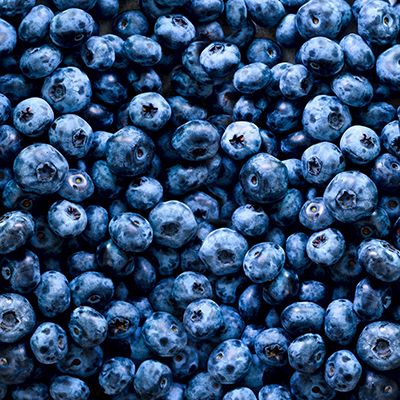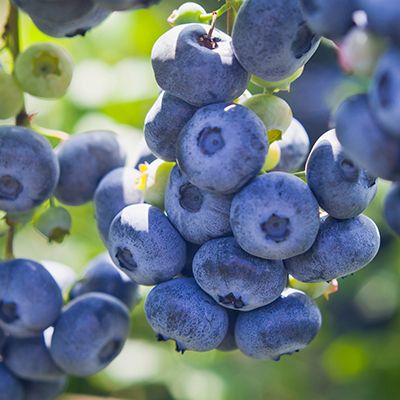


Growing Blueberries
Blueberries (Vaccinium corymbosum) will grow and produce good crops of fruit if a few of their special needs are met. They are closely related to Rhododendrons and Azaleas so plan on giving them about the same growing conditions.
Soil – Our Peninsula soils are very alkaline and must be made acidic (pH of 4.5 to 5.5). If a large area is to be planted, scatter two to three inches of Sunshine Peat Moss over the area and start with 25 pounds of soil sulfur per 1000 square feet; (add more later if needed) and dig or roto-till to a depth of six to eight inches. If you are planting in an individual hole, remove the native soil and mix with one-half Master Nursery® Forest Blend or Sunshine Peat Moss plus one cup of soil sulfur and use as backfill for the plant.
Light – Blueberries need full sun all day to produce sweet fruit and most dislike temperatures over 90°F.
Water – An inch of water per week through the growing season is usually considered essential for maximum growth and fruiting of blueberries. Each plant or the collective group of plants should have a four inch berm at the drip line so the plant(s) can be flood watered.
Fertilizing – Don’t fertilize Blueberries at planting but fertilize lightly four to six weeks later. Use Master Nursery® Camellia, Azalea, Gardenia Food at a rate of one ounce per year of plant age up to a maximum of 8 ounces per plant per year for mature plants. Divide the fertilizer into three portions and apply at about Valentines’ Day, Memorial Day and Labor Day. Never use a fertilizer containing nitrate Nitrogen which could kill the plant. Supplement the fertilizer with a small handful of Iron Sulfate during the Memorial Day and Labor Day treatments to keep down the soil pH.
Pruning – Blueberries should be pruned annually during the dormant season. Prune lightly the first two years to remove low branches, overlapping branches and flower buds (so there will be no fruit). From the third year on, prune as you would a hybrid tea rose. Remove old canes and weak spindly shoots. Prune out overlapping canes and branches and head back very vigorous upright shoots to force branching at a lower level. Reduce very heavily branched canes by one-third.
Planting – Prepare the soil as out lined above. Plant the bush so that the crown is just barely at soil level with roots no more than one-half inch below the ground (plant high to ensure good drainage). Blueberries have fine roots near the soil surface which must be kept moist, but never in standing water. A three to four inch layer of mulch is recommended to keep the roots cool and moist and to help hold down weeds. Do not cultivate around the plants because the roots close to the surface are easily damaged. Add mulch each year to maintain the three to four inch depth. Remember to keep at least a two inch space between the mulch and the crown of the bush.
Container Planting – If you don’t have a garden place with full sun all day, you should consider container planting where you can place the container on a sunny patio or near a pool, for example. Blueberries are one of the most satisfactory and enjoyable container fruit crops. In addition, the plant is an extremely attractive container plant by itself. All the above information applies to Blueberries growing in containers except you will have to modify the soil mix as follows:
Blueberry Container Soil Mix
One-third part Nurseryman’s Acid Planting Mix
One-third part Sunshine Peat Moss (moistened)
One-third part Greenhouse Mini-Mulch
One handful of Soil Sulfur per plant
Mix these ingredients thoroughly and start in a two to five gallon container. As your plant grows, move it into a 16 to 20 inch container. Fertilize once a month with Master Nursery® Camellia, Azalea, and Gardenia Food. If foliage shows yellowing (chlorosis), supplement the fertilizer with Iron Sulfate.
One of our friends has planted three Blueberry bushes in a wine barrel (O’Neal, Misty, and South Moon). These are early, mid-season and late Blueberries which provide a crop all summer long.
A bit of trivia—if your health food store recommends Bilberries as an anti-oxidant; Bilberry is the Canadian name for Blueberry!
The final words for Blueberries—Moist, acid soil, good drainage, full sun.